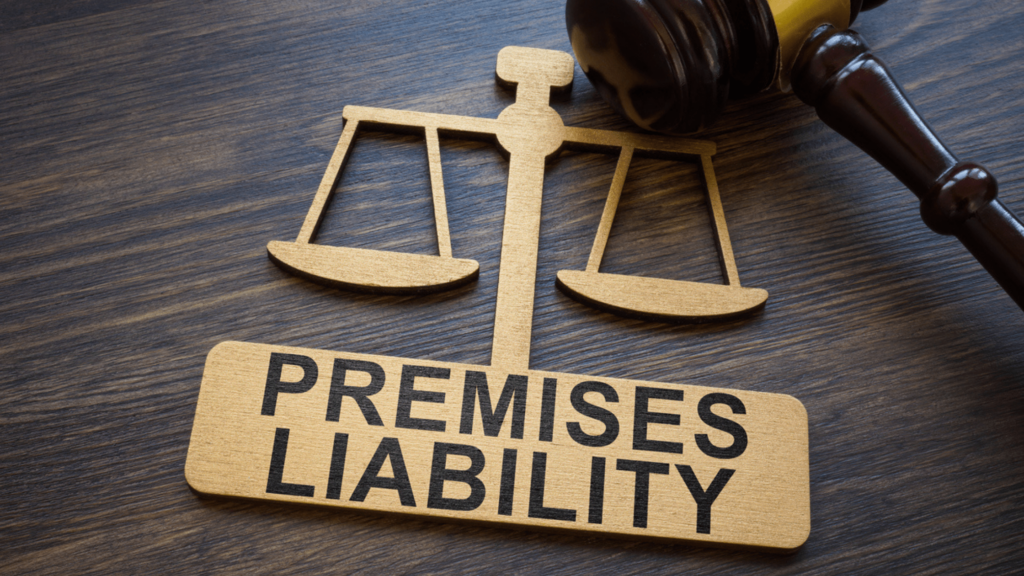- News
- Michigan’s Supreme Court Has Just Announced Major Changes to Slip-and-Fall Laws: Here’s How It Could Impact Your Case
Michigan’s Supreme Court Has Just Announced Major Changes to Slip-and-Fall Laws: Here’s How It Could Impact Your Case

The Michigan Supreme Court just changed the landscape of slip-and-fall (a.k.a. premises liability) cases in Michigan. Previously, slip-and-fall cases were almost impossible for plaintiffs to win based on what was called the “open and obvious doctrine.” However, Michiganders will now have a much higher likelihood to receive compensation for personal injuries caused by the negligence of land possessors, property owners, and businesses.
On July 28, 2023, the Court entered its Opinion in Kandil-El Sayed v F& E Oil, Inc and Pinsky v Kroger Co of Michigan. That decision updates Michigan law on liability for injuries from slip-and-fall cases by removing the open and obvious doctrine (which had previously served to give corporations almost complete immunity for negligence in slip-and-fall cases). The Court concluded that Lugo v Ameritech Corm Inc, a case that was decided by the Michigan Supreme Court over 20 years ago, was wrongly decided and outdated. The Lugo Court concluded that slip-and-fall lawsuits for “open and obvious” perils were barred based on the duty element of negligence. However, in Kandil El-Sayed/Pinsky, the Michigan Supreme Court concluded that the open and obvious nature of a peril would be considered under a comparative fault framework instead of as part of the duty element of negligence.
If that sounds complicated, don’t worry. We’ll explain it in more simple terms in a moment. It is important to note that this decision will reset much of Michigan’s laws surrounding premises liability, but it is almost certainly good news for people who are injured from the negligence of property owners, landlords, employers, or companies that own real estate in Michigan.
First, What’s the “Open and Obvious Doctrine?”
In cases where a hazard exists on someone’s property and someone gets hurt by it, the defendant will often attempt to use the “open and obvious doctrine” as a defense to show that the person who was injured (the plaintiff) could easily have avoided the danger because it was “open and obvious” for anyone to observe. For instance, if someone walking through a parking lot trips on a pothole and is seriously injured as a result, the defense would argue that a reasonably prudent person would have been able to see and avoid the pothole such that the danger was “open and obvious.” Because a reasonably prudent person would have avoided the danger, the defendant would be able to get off the hook for their negligence in the case even if the defendant should have acted to prevent the accident by repairing the pothole..
Or consider a case where there’s untreated ice on the sidewalk leading into a store. Sometimes black ice can be nearly invisible and isn’t “open and obvious” at all, but defendants would often still argue (and in many cases, win) on the basis that the ice was “open and obvious.” As you can probably imagine, the “open and obvious” defense requires significant interpretation by judges and juries in deciding the outcome of cases where it comes into play. Nevertheless, it’s been the typical defense tactic used in these kinds of “premises liability” (sometimes called “slip-and-fall”) cases in Michigan for more than 20 years. Under Lugo, the case that the Michigan Supreme Court just overturned, and its progeny, absent some “special aspects” to the hazard, the open and obvious doctrine almost always served as a complete bar to a plaintiff’s recovery in these cases.
This new case serves to remove the open and obvious doctrine’s de facto immunity for land possessors and will allow invitees to those properties to recover for the negligence of the entities or individuals who fail to properly maintain their property. However, this does not mean that every injury suffered due to some flaw in the property of a land possessor will be compensable, nor does it mean that guests no longer have a duty to act reasonably and avoid obvious dangers. These considerations could still be presented to a jury under the comparative negligence framework of Kandil El-Sayed/Pinsky and harm or even eliminate your case. If you have questions about an injury you suffered, it is important to contact an experienced personal injury attorney as soon as possible to see if you have a viable case under this new precedent.
What’s “Comparative Negligence” (a.k.a. Comparative Fault)?
First, it’s important to define the word negligence, a legal term which requires four elements to be proved. As we described in a previous article, the first is duty – which means the defendant has a legal responsibility to provide a safe environment for customers, workers, tenants, etc. The second is breach – meaning the defendant has failed in their duty to offer a safe place to shop, to work, or to live. Third is causation, in which it’s determined whether the defendant’s negligent actions (or in some cases lack of actions) resulted in the plaintiff’s injuries. And, finally, the fourth element is damages, meaning that the plaintiff actually suffered a harm as a result of the negligence.
Michigan has used the concept of “modified comparative negligence” in deciding many kinds of personal injury cases for years. Basically, under this standard, if you are found to be 51 percent or more responsible for your injuries, you can’t collect pain and suffering damages at all. In general, when comparative negligence is at issue, the jury will be asked to assess whether both the defendant and the plaintiff were negligent in causing the injuries at issue in a specific case. Only if the jury concludes that both the plaintiff and the defendant were negligent will it then be asked to allocate the amount of fault to each party for the injuries at issue.
In the context of slip-and-fall/premises liability cases this could play out in many ways. However, a very common example that Michiganders face every year is the presence of black ice on a walkway. Depending on the facts surrounding an accident, it is plausible that a jury could conclude that injuries from slipping on black ice were entirely the fault of the land possessor, entirely the fault of the guest walking into a venue, or some mixture of the two. For example, if it is cold, snowy, and dark outside as you are running into a coffee shop to get your caffeine fix on the way to work when you slip and fall on some black ice, it is possible that a jury would conclude you were more than 50% at fault for your injuries. Some of the factors it may consider would be that: (1) it was still snowing so the land possessor did not yet have adequate time to remove the snow and ice from the walkway; (2) slippery conditions are expected when it is cold and snowy and Michigan such that a reasonably prudent person would have exercised additional care when proceeding down the walkway; and (3) because it was still dark out, you should have been extra careful as you were walking into the coffee shop because the decreased visibility made the snowy and icy conditions even more perilous. It is completely plausible that a jury could also find that you were 50% or less at-fault for this exact same incident because: (1) the land possessor should have put out salt in preparation for the snow and ice; (2) the land possessor should have installed lighting near the walkway to make the snow and ice more visible; and (3) they should have cleared the snow that had accumulated before opening up shop for the day. However, even in this scenario, where the jury concludes you were only 40% at fault for the accident, your damages may be reduced by that percentage.
Additionally, it is always best to be as cautious as possible because if the jury determines you were 51 percent or more responsible for your injuries, you’ll be unable to collect pain and suffering damages under Michigan law because of the state’s “modified comparative negligence” rules – the very same ones referenced in the Supreme Court decision last week.
What Are the Implications if You’re Injured in a Slip-and-Fall Incident?
Since the Supreme Court’s decision is very recent, we don’t yet know the long-term implications of its ruling. But we can predict that by throwing out decades of “open and obvious” legal precedents, the state court system will likely see more cases come before juries who will be tasked with determining the comparative responsibility of plaintiffs and defendants in slip-and-fall negligence cases. One legal analysis of the court’s decision already predicts it will result in “expanding liability, increasing litigation and destabilizing the law as we know it.”
What this means to people who are injured in premises liability accidents is that they’ll need to have a team of informed, intelligent, and dedicated attorneys working on their behalf to be sure their rights are protected, and that they receive fair compensation for their injuries, lost wages, medical bills, and any other damages they’ve experienced due to others’ negligence. And we know exactly how you can get that kind of legal help. It’s by calling 855-MIKE-WINS (855-645-3946) or contacting our premises liability law team right here. We’ll keep up to date on the state’s latest legal decisions as well as established precedents… to help you get all the compensation you deserve.

Content checked by Mike Morse, personal injury attorney with Mike Morse Injury Law Firm. Mike Morse is the founder of Mike Morse Law Firm, the largest personal injury law firm in Michigan. Since being founded in 1995, Mike Morse Law Firm has grown to over 200 employees, served 40,000 clients, and collected more than $1.5 billion for victims of auto, truck and motorcycle accidents. The main office is in Southfield, MI but you can also find us in Detroit, Sterling Heights and many other locations.








